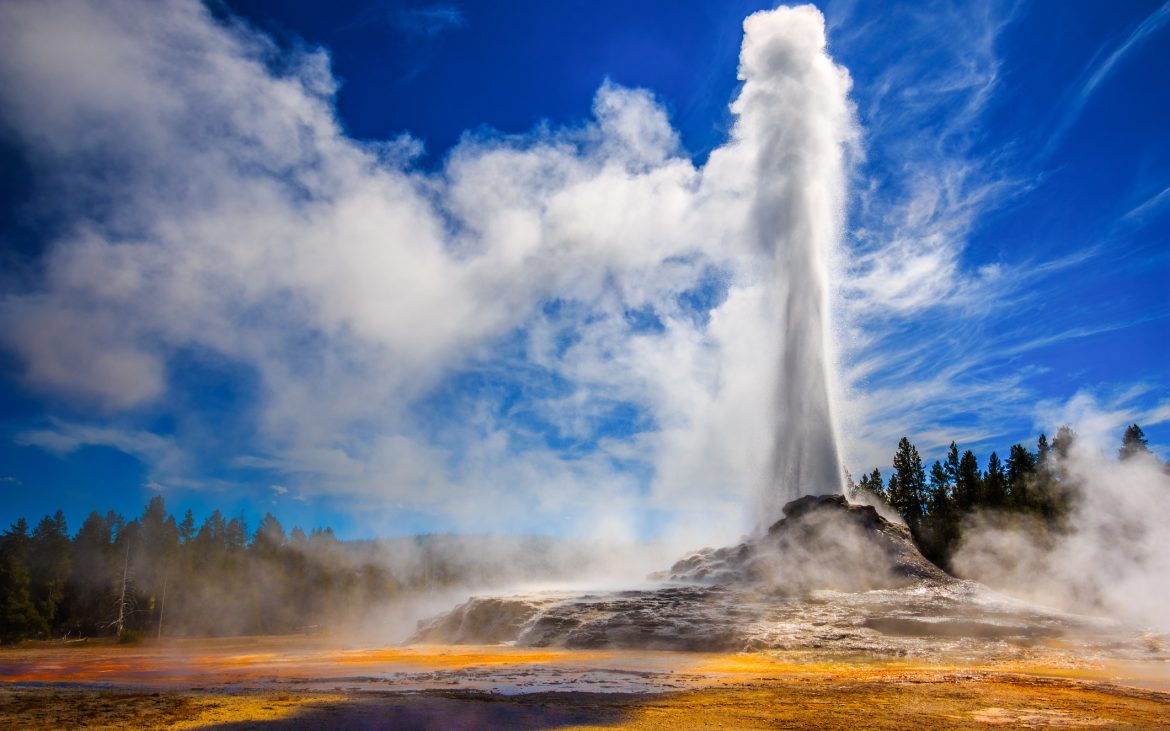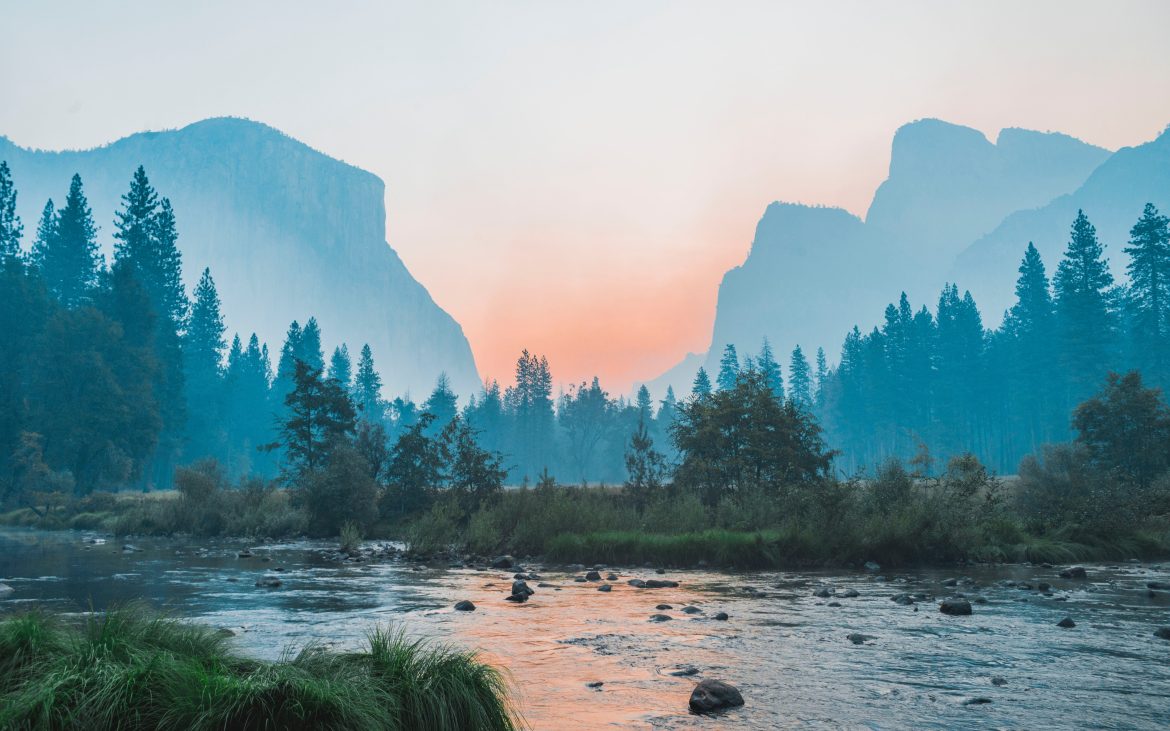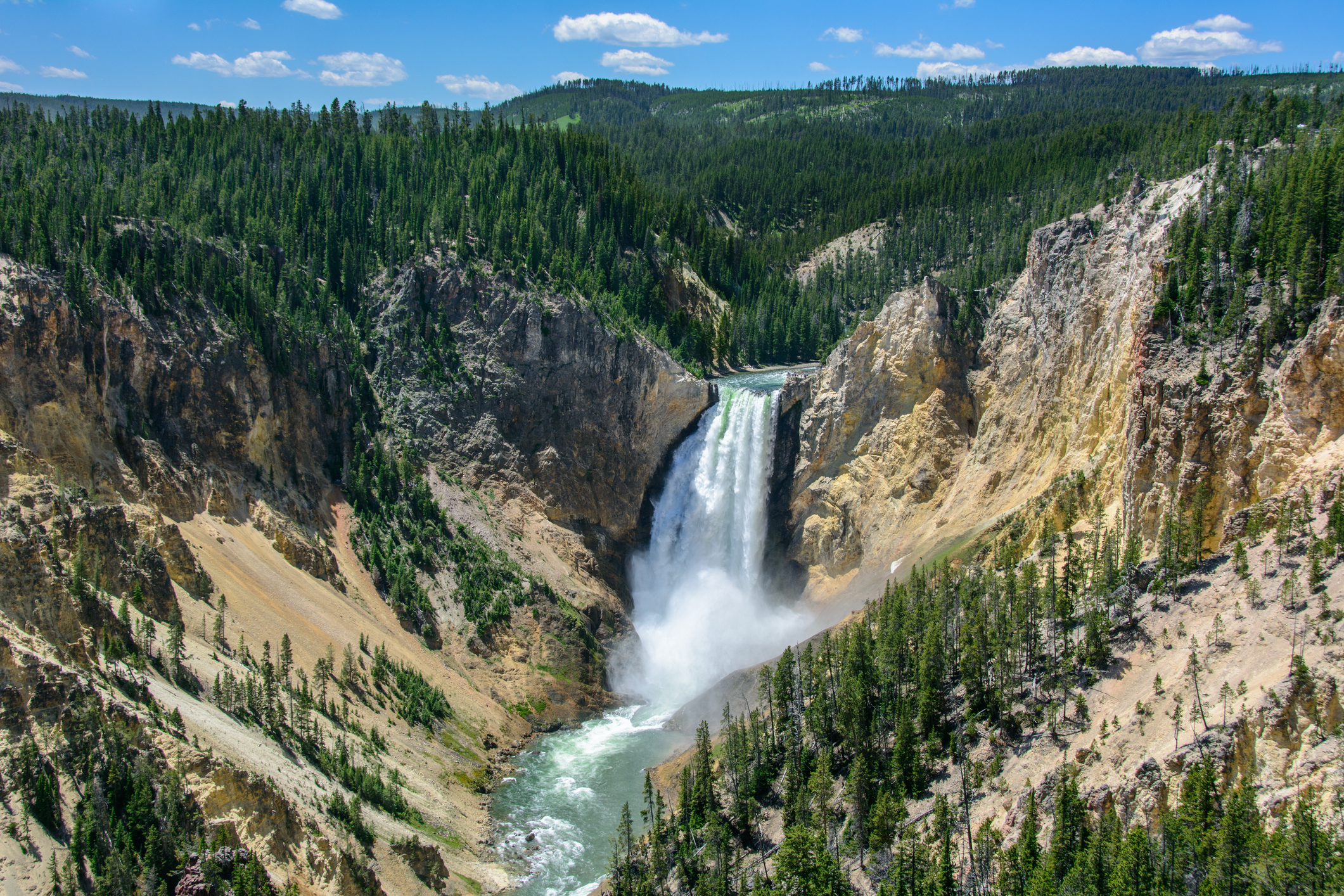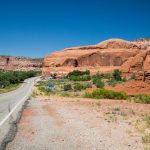The National Park Service, formerly known as the National Park System, grew in the century between 1872 and 1972 from a single, original public reservation called Yellowstone National Park to embrace almost 300 historical, cultural, recreational, and natural properties situated throughout the United States, its island possessions, and territories. The said properties have come to include increasingly diverse categories in 400 areas — not only National Parks, but also National Monuments, National Memorials, National Military Parks, and others. You may be wondering how this remarkable growth and diversification occurred. These areas now cover 84 million acres across all fifty states.

Castle Geyser erupting in Yellowstone. Credit: Getty Images, Riishede
This incredible story began with just one park that didn’t bring any revenue. The concept of the national park is largely credited to George Catlin, an American painter who, in 1832, traveled across the Great Plains to document disappearing native American tribes. According to Catlin, “A nation’s park, containing man and beast, in all the wild[ness] and freshness of their nature’s beauty!”
Decades later, his dream came true when a natural wonderland spanning Wyoming, Montana, and Idaho became the world’s first official national park. They called it the Big Yellowstone.
In California’s Yosemite Valley, controversy was brewing. John Muir believed that the state-managed areas were being exploited and lobbied congress for it to become a national park under full federal control. In 1903 Muir convinced President Theodore Roosevelt to join him on a camping trip in Yosemite. Three years later, the park was under full federal control. Roosevelt took swift action, making Wyoming’s Devil’s Tower the first national monument that year and establishing a tradition of a continued today.

Yosemite Valley, turnout near Tunnel View. Credit: Unsplash, Bailey Zindel
On August 25, 1916, the National Park Service was created by President Woodrow Wilson to clear the bureaucratic mess. By 1933, President Franklin Delano Roosevelt further streamlined the executive order 6166 by consolidating the national parks, monuments, memorials, and cemeteries into a single national park system. Three decades later, President Johnson ushered in a new era of America’s conservation. This emphasizes the people’s ideology that sought more publicly accessible parks and urban areas. Since then the list of national parks has grown steadily. California has the most national parks with nine. While Alaska’s Wrangell-St. Elias National Park is by far the largest with 13 million+ acres. Can you even imagine America without its national parks? We sure can’t. From the rivers of grass in the Everglades to the volcanoes of Hawaii, this unique system reflects how far Americans have come in appreciating the natural world.




